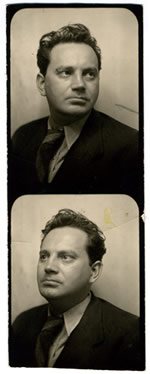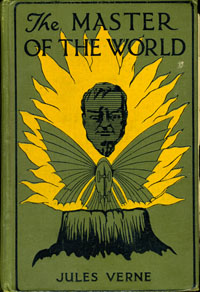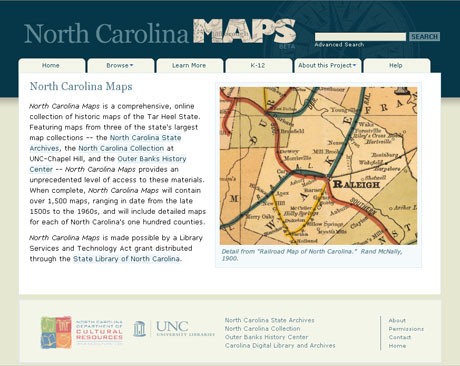Described by the Dictionary of North Carolina Biography as a “minister, writer, lecturer, lawyer, playwright, producer, director, actor, legislator, and clerk of the federal court for the eastern district of North Carolina,” Thomas Dixon, Jr. was a man of many professions. Born near Shelby, North Carolina, on this day in 1864, Dixon is best known as the author of The Clansman, which started as a book, was made into a play, and then a movie called The Birth of a Nation. He also wrote The Leopard’s Spots: A Romance of the White Man’s Burden, 1865-1900, which historian Joel Williamson describes as a “twin plea for the exclusion of the [African American] from American society and for a reunion of North and South.” The image above is a publisher’s circular from ca. 1902 that can be found among the North Carolina Collection’s broadsides. To view other items about Dixon at the UNC Library click here. To view items written by Dixon click here.
Category: Literature
Look Homeward, Angel returns to Broadway
A brief notice in yesterday’s New York Times brought the exciting news that Look Homeward, Angel, the play based on Thomas Wolfe’s 1929 novel, is returning the Broadway. While attempts to make a movie out of the autobiographical story set in western North Carolina have repeatedly failed, the play by Ketti Frings has been very successful, revived countless times around the country since it first premiered in 1957.

North Carolina Maps
I’m excited to announce the release of the beta site for North Carolina Maps, the historic map digitization project by the North Carolina State Archives, UNC-Chapel Hill University Library, and Outer Banks History Center.
The site currently includes over 750 maps, primarily from the State Archives and the North Carolina Collection. Maps from the Outer Banks History Center will be added in the fall. There is an impressive variety of maps on the site, including many of the earliest maps of North Carolina, state highway maps, Coast and Geodetic Survey maps, and — my personal favorite — soil survey maps. North Carolina Maps also includes at least one map for each of North Carolina’s 100 counties.
New maps and features will be added to the site on a regular basis over the next two years. North Carolina Maps is made possible by a Library Services and Technology Act grant distributed through the State Library of North Carolina.
New Read North Carolina Novels Site!
I am happy to announce that the North Carolina Collection’s new blog–Read North Carolina Novels–has officially gone live! This blog replaces the old Read North Carolina Novels website; it is updated, expanded, and provides more ways to search for the kinds of North Carolina-set books that might interest you. You can search for books by keyword or author, or browse based on genre, county, region, or year of publication. We’ve also categorized books for kids, series books, and novels that have fictional N.C. settings. I’m especially excited that the new site also offers you the opportunity to make comments and suggestions. We will be adding to the blog regularly as the North Carolina Collection acquires new titles, and we welcome suggestions of books to add to our list.
So, whether you are already a fan of fiction set in North Carolina or just looking for your next summer read, you should check it out. To visit, click here, or on the “Read North Carolina Novels” link in the right-hand column.
Blood Done Sign My Name, The Movie
Today’s Raleigh News and Observer reports that Tim Tyson’s award-winning Blood Done Sign My Name will be made into a movie. Luckily, it appears that the film will be shot in North Carolina, with the article mentioning potential locations such as Hillsborough, Oxford, and my adopted hometown of Mocksville.
Happy Birthday Thomas Wolfe!

Thomas Clayton Wolfe was born on this day in 1900 in Asheville, N.C. North Carolina’s most renowned writer, author of Look Homeward, Angel and You Can’t Go Home Again, is still celebrated in his hometown. Asheville is host this week to the Thomas Wolfe Festival, and the recently-restored Thomas Wolfe Memorial, site of Julia Wolfe’s former boarding house, remains a popular tourist destination and should be near the top of the to-do list of anyone visiting the Paris of the South.
One of the highlights of the Wolfe Festival will be Saturday night’s fundraising dinner at the Old Kentucky Home. Guests will be given a rare opportunity to eat in the original dining room of an early twentieth-century boarding house. They’ll be presented with a traditional menu, but hopefully it won’t stick too close to the sort of fare offered by the notoriously parsimonious Julia Wolfe.
North Carolina literature is hot!
Library Journal is a semi-monthly magazines aimed at librarians. I read it regularly because it’s a good source of book reviews and news on forthcoming books. Like a number of other reviewing sources, Library Journal uses a star to draw the reader’s attention to a book that is particularly good. The July 2007 issue contained reviews of four forthcoming books from North Carolina authors, all of which received starred reviews. Mark your calendars for these books:
Sarah Addison Allen. Garden Spells (due out in August)
John Hart. Down River (October publication date)
Margaret Maron. Hard Row: A Deborah Knott Mystery (due out in August)
Robert Morgan. Boone: A Biography (October publication date)
What’s New in the North Carolina Collection
I’ve just added a generous number of titles to our What’s New in the North Carolina Collection page. This list is updated four times a year with our latest selections. Full citations can be found in the University Library catalog and these items are all available for use in the North Carolina Collection Reading Room. Check out the list under Pages in the right column.
Carolina, The Blue Waves Are Breaking
While looking for something totally unrelated, I stumbled across this poem in the December 1853 edition of The North-Carolina University Magazine. For those Tar Heels who have had the unfortunate pleasure of emigrating elsewhere, this poem may make you hop the next flight back home.
Carolina, the blue waves are breaking,
Soft, soft on thy shell-spangled shore;
And the wild birds, their songs are making
In sweetness and gladness once more.
And the sun rays are softly reclining
On the sweet dimpled waves of thy tide,
And as gently are heaving and shining,
As the gems on the breast of a bride.
Carolina, mid the pines of thy wildwood
The breezes are passing away,
Like the fast fleeting memories of childhood,
Or the last dying tints of the day.
Carolina, I love, I adore thee;
Thy valleys, thy mountains and shore
Will e’er be in memories before me,
Altho’ I should see them no more.
Yet no matter what skies are above me,
Tho’ a wanderer to many a strand;
Carolina, I ever will love thee
And call thee my own sunny land.
By A. Perry Sperry (pseud.?). Greensboro, Nov. 10, 1853.
Jules Verne in North Carolina

One of the surprises lurking in the stacks of the North Carolina Collection is Master of the World by Jules Verne. We have both the original French edition and an English translation. Sacre bleu, you say. What does the creator of Captain Nemo and his submarine, Nautilus, have to do with North Carolina? Verne never visited North Carolina, and, in fact, seldom journeyed far from his home in Amiens. The settings of his novels, however, range widely over the face of the earth, and Master of the World is set, in part, in western North Carolina. There folks are in a tizzy, in Verne’s story, because strange explosions and eruptions of smoke on top of a mountain called “The Great Eyrie” suggest that the mountain may be a volcano coming to life. An intrepid party climbs to the top of the mountain and finds, not a volcano, but a villain. Robur, an ambitious and somewhat twisted genius, has built a workshop on the flat top of the mountain where he has constructed the Terror – a combination automobile, ship, submarine, and airplane. With his invention he plans – you guessed it – to conquer the world! I leave you to follow the rest of the story.
“The Great Eyrie,” which is pictured on the cover of our English translation, bears a strong resemblance to Pilot Mountain, although Verne has moved it far from its real home. North Carolinians will be struck as well by other oddities. For instance, Verne vividly describes the Spanish moss growing in the trees in the vicinity of Morganton! Richard Walser and E. T. Malone, authors of the 1986 edition of Literary North Carolina, suggest that Verne may have been inspired by newspaper accounts of earthquakes that shook Rutherford and Burke counties in 1874. He then filled in the details from reference works (none too accurate) available to him in France. Judge for yourself. See you on the Great Eyrie.



